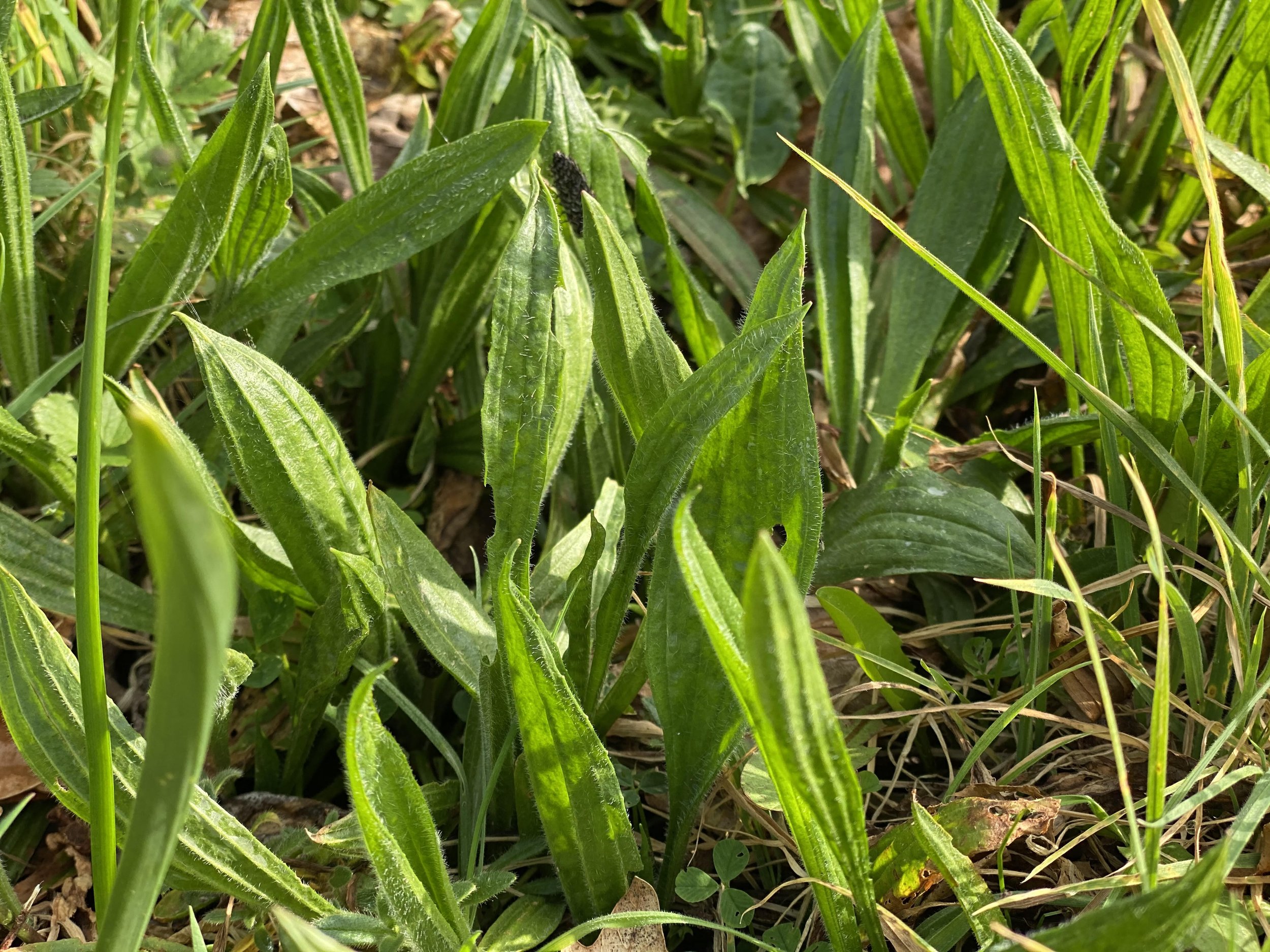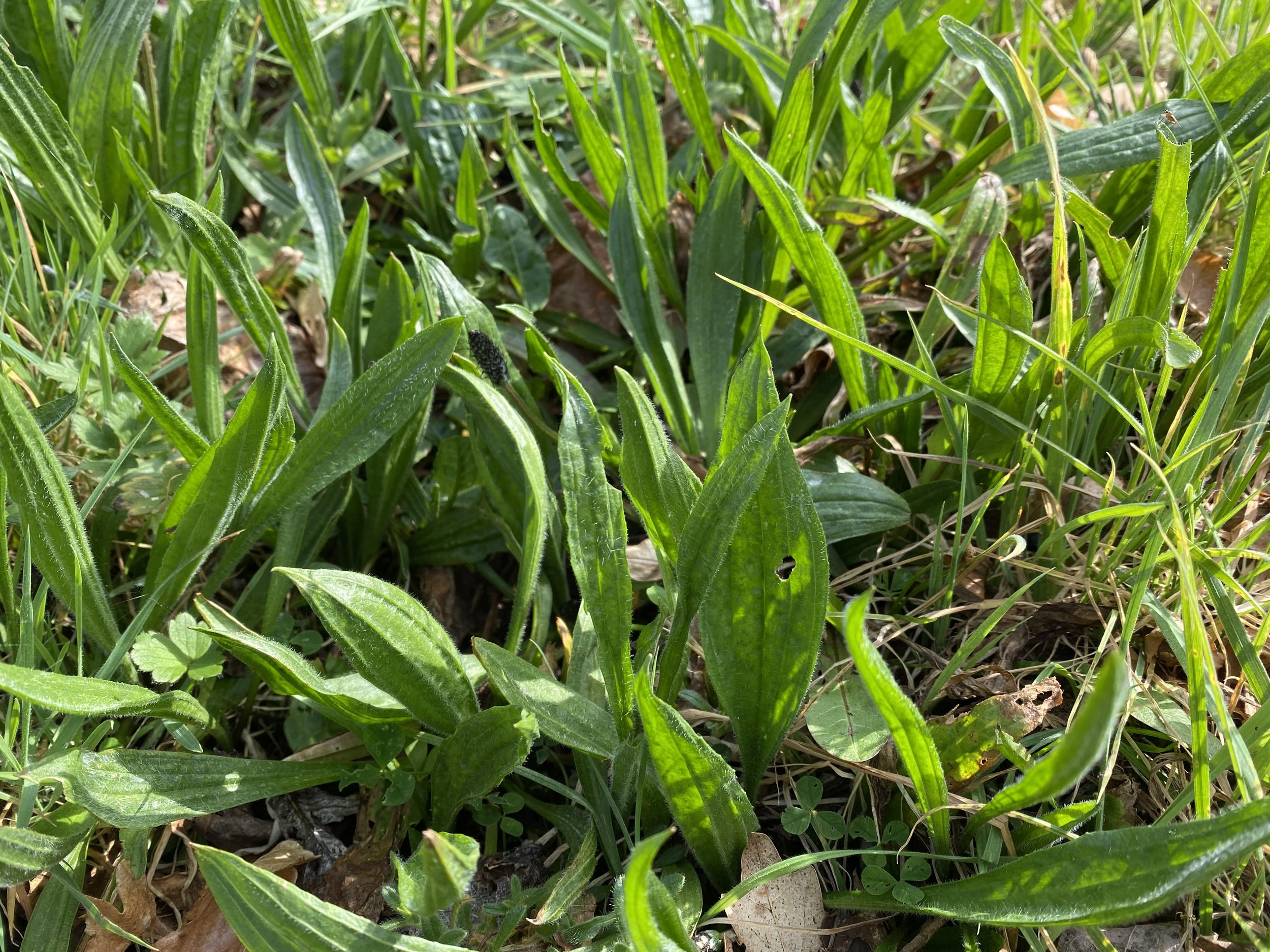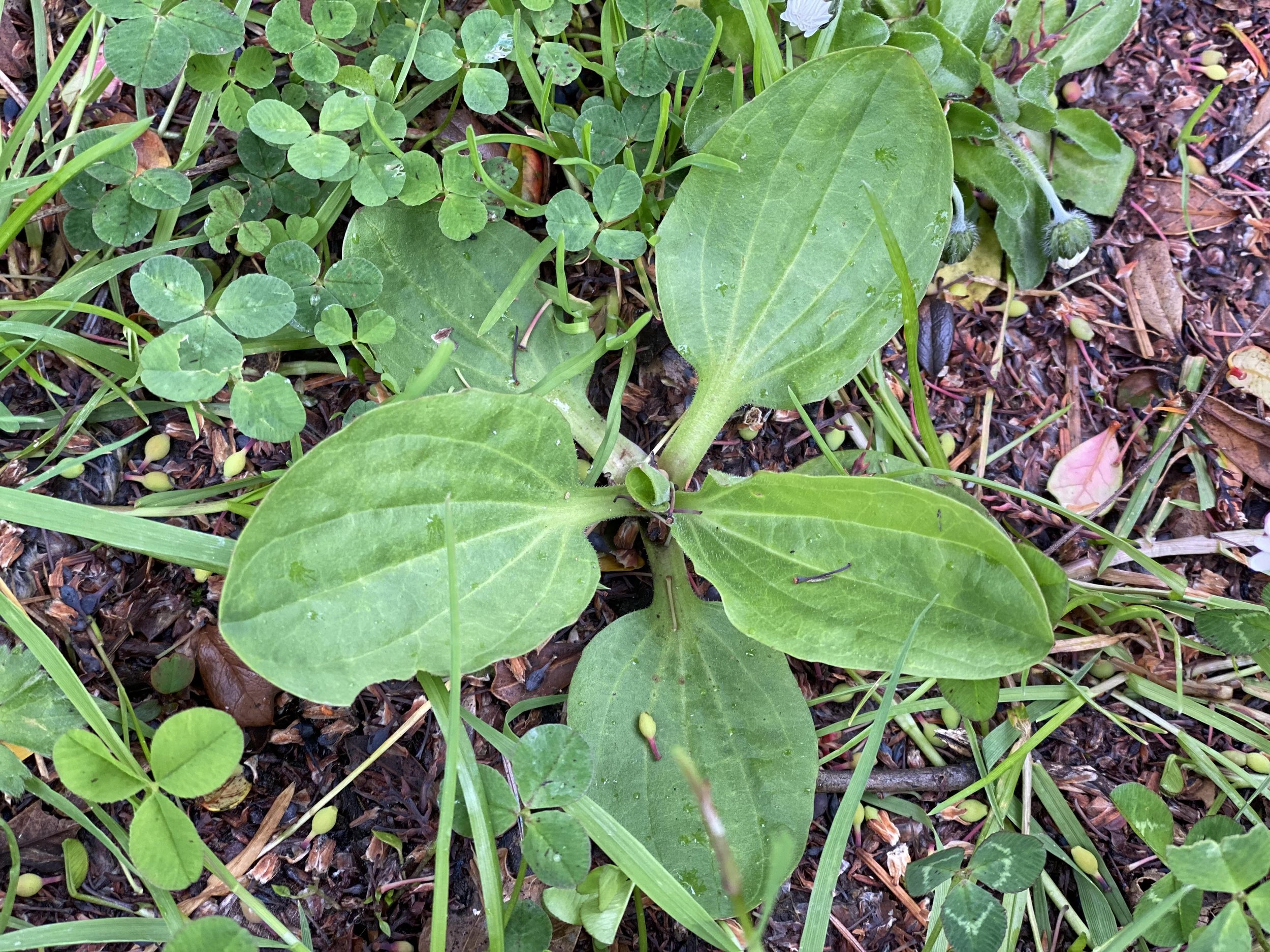Plantain (Common Plantain and Ribwort)
Gaby features PLANTAIN (Common Plantain, Plantago major and Ribwort,Plantago lanceolata ) on every foraging walk and workshop. It is such an important and versatile wild plant. This large cosmopolitan genus includes about 250 species of annuals, biennials, and perennials. In Gaelic, this herb is known as “the healing plant” because it was used in Ireland to treat wounds and bruises.
P.asiatica is native to China; P.psyllium to the Mediterranean, P.major and P.lanceolata, common in Europe and temperate regions of Asia, is a pernicious weed of lawns and paths. Some Native American called it “white man’s foot”, because it seemed to spring up in the footsteps of the white settlers.
Parts used: Leaves, seeds
Habitat and Cultivation: There are two general species growing in Ireland: narrow leafed variety, or Plantago lanceolata (Ribwort), and a broad leaved, preferred variety, Plantago major (Common Plantain).
Ribwort is a very dark green, slender perennial, growing much taller than Common plantain. Its leaf-blades rarely reach an inch in breadth, are three to five ribbed, gradually narrowed into petioles, which are often more than a foot long. The flower stalks are often 2 feet long. Common Names of Ribwort: Long Plantain, Ribble Grass, Snake Weed, Lamb’s Tongue)
Common Plantain is a perennial plant growing to 25cm (10in). It has a basal rosette of broad, deeply veined leaves and dense clusters of tiny green flowers on spikes. Rarely cultivated, it is normally picked from the wild. Both grow by roadsides, in ditches, meadows, moist wastelands.
The leaves are gathered throughout spring and summer.
Medicinal uses:
Both the Common Plantain and Ribwort have the same medicinal value and are used in the same way.
Taken Internally:
Primarily Plantain leaves are used for all disorders of the respiratory organs, especially for phlegm in the lungs, whooping cough, bronchitis and bronchial asthma, even for tuberculosis of the lungs.
It is used as well for allergies rhinitis with catarrh (combine with eyebright) especially for copious, watery catarrh. And hayfever.
It cleanses the blood, the lungs and the stomach and is therefore valuable for weak lungs and kidneys; pale looks, eczema and herpes, and for people who are hoarse and plagued with slight coughs.
Plantain helps with kidney and urinary bladder infections, water retention and hepatitis.
It helps with diarrhoea and excessive menstrual discharge.
For constipation the P.psyllium seeds are used. The seeds make bulking laxatives for a sluggish or irritable bowl. They are also used for wounds and skin infections.
Externally:
Plantain quickly staunches blood flow and encourages repair of damaged tissue.
It may be used instead of Comfrey in treating bruises and broken bones.
An ointment or lotion may be used to treat haemorrhoids, fistulae (abnormal passage in the skin) and ulcers.
It is a seemingly miraculous poultice for stopping the pain of spider and snakebites, bee stings and other insect wounds and draw out their stingers and poisons.
Culinary:
Plantain It is high in Vitamin A,B, C and K, and high in minerals (Calcium, iron, silica, phosphorus, magnesium, selenium, zinc, high levels of potassium, sulphur). It is used chopped in smoothies, pestos and salads. Also delicious in the omelette recipe below.
Ribwort Plantain Omelette
Serves 1
1 small onion
2 eggs or egg replacer
Salt, pepper
1 handful ribwort plantain
Oil or butter or ghee for frying
Chop the onion finely and fry it in the pan. Whisk the eggs, adding salt and pepper. Chop the ribwort plantain finely and stir it in. Pour the mixture into the pan. Fry the omelette until the first side is golden brown and firm. Then toss it and cook the other side.
More recipes for a variety of wild herbs and the mineral and vitamin content of wild herbs in
“Cooking Weeds”
By Vivien Weise
Prospect Books
ISBN : I-903018-30




